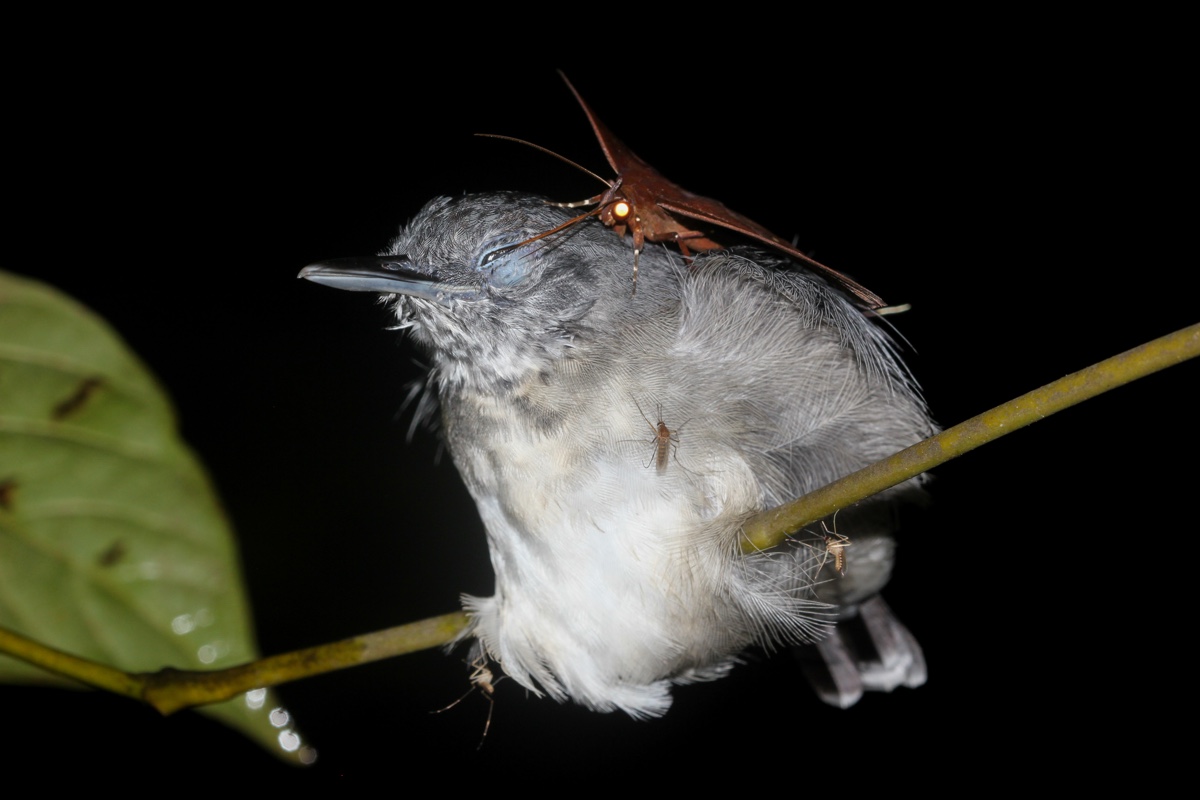Watch a Moth Suck the Tears Out of a Bird's Eye, Because Nature Is Metal
Take this moth, for instance. Somewhere in the Brazilian Amazon, this moth is literally drinking the tears out of a bird's eye in the dead of night. While we at Live Science do not hold any degrees in lepidopterology, we believe we are correct in saying that's pretty metal.
Actually, drinking the tears of your neighbors is common enough in biology that it has a name: lachryphagy. Tear-drinking is a relatively common way for insects like butterflies, moths and bees to supplement their diets, according to Leandro João Carneiro de Lima Moraes, a biologist at the National Institute of Amazonia Research in Brazil who filmed this moth-on-bird action while doing fieldwork in the central Amazon.
For insects like these, a few crocodile tears here or a tipple of turtle tears there can provide a nice source of free sodium and even a bit of protein, Moraes wrote in a new study published Sept. 17 in the journal Ecology. Large, cold-blooded reptiles make good drinking destinations, as they are prone to going torpid — that is, reducing their metabolisms and lying still for extended periods of time. A video shot in the Amazon earlier this year illustrates that well, as eight opportunistic butterflies take turns drinking the tears from a river turtle's eyes.
So, what about birds? According to Moraes, moth-on-bird lachryphagy is a much rarer scenario (his is only the third study showing it happens at all). You can probably guess why, regardless of whether you've ever tried to drink a bird's tears; birds are just too fast, too small and too good at flying. [See Photos of Butterflies Drinking Turtle Tears]

But in this case, Moraes wrote, the moth's success may have come down to timing. Moraes filmed at night— a time when the black-chinned antbird (seen in the video) enters a torpid state of its own, becoming virtually immobile as a side effect of lowering its body temperature. This also makes the bird vulnerable to the appetites of nocturnal moths. In short succession, Moraes witnessed two separate moths poking their proboscises into two separate antbirds' eyes — and neither bird put up a fight.
"The bird immobility during these events may be related to the significant decrease in the metabolism of these organisms during the nocturnal period," Moraes wrote in his study, "rather than having some direct benefit from that relationship."
Indeed, it's unlikely that the birds (or turtles, or crocodiles) get anything out of having their tears harvested. In fact, Moraes wrote, it might even put them at higher risk of developing ocular diseases when a strange insect dips into their peepers for a drink. It's like mama always said: You don't know where that proboscis has been.
Sign up for the Live Science daily newsletter now
Get the world’s most fascinating discoveries delivered straight to your inbox.
Originally published on Live Science.

Brandon is the space/physics editor at Live Science. His writing has appeared in The Washington Post, Reader's Digest, CBS.com, the Richard Dawkins Foundation website and other outlets. He holds a bachelor's degree in creative writing from the University of Arizona, with minors in journalism and media arts. He enjoys writing most about space, geoscience and the mysteries of the universe.










